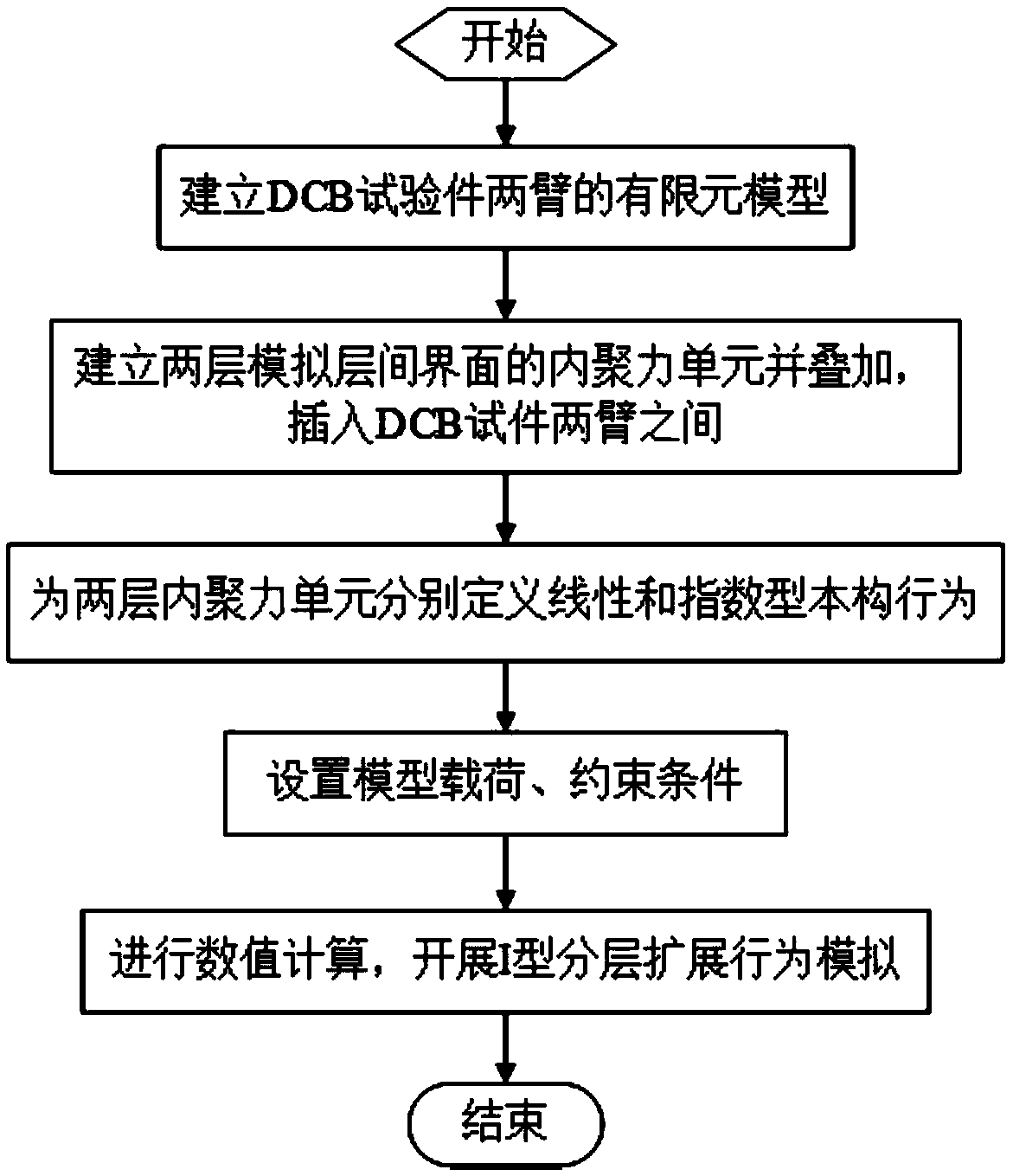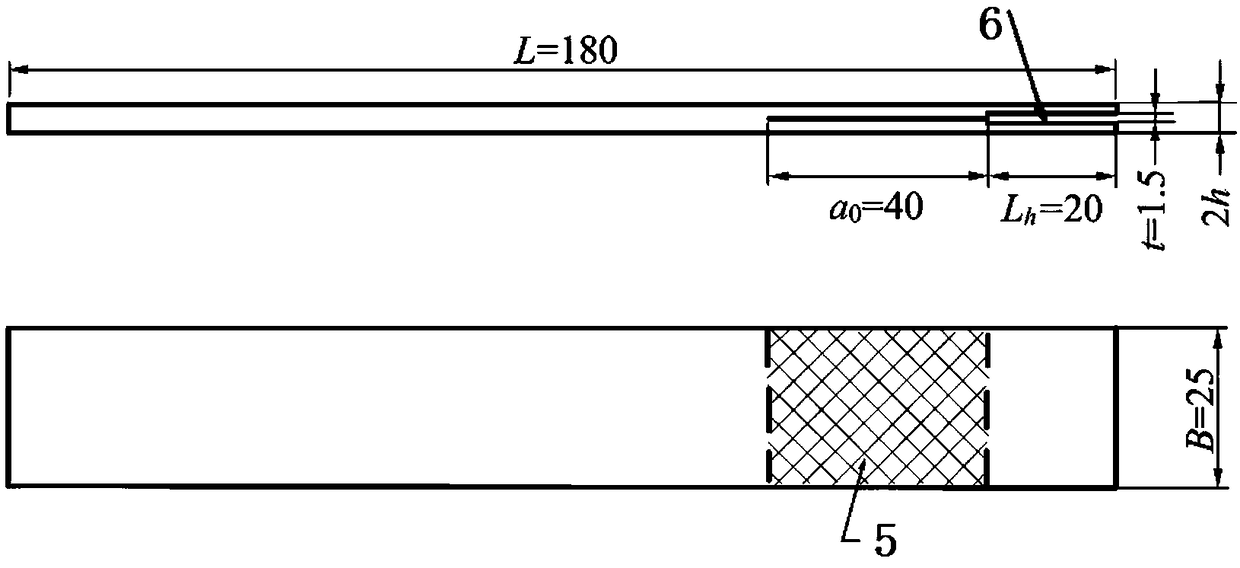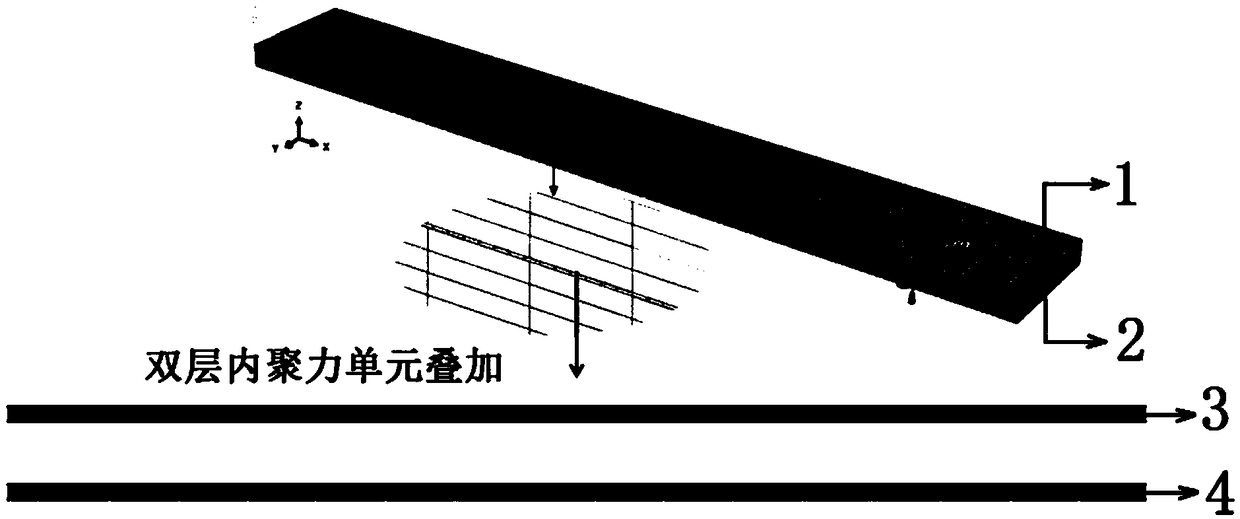A composite material laminate I-type delamination simulation method based on cohesive element superposition
A technology of composite material layer and simulation method, which is applied in the field of simulation of type I delamination of composite material laminates, can solve the problems of accurate simulation of type I delamination behavior of composite materials, calculation non-convergence, etc., and achieve the effect of shortening the development cycle
- Summary
- Abstract
- Description
- Claims
- Application Information
AI Technical Summary
Problems solved by technology
Method used
Image
Examples
Embodiment Construction
[0038] The specific embodiment of the present invention will be further described below with an example of a type I layered DCB test of a composite material laminate. This example is only used to explain and illustrate the present invention, and does not constitute any limitation to the present invention.
[0039] geometric description;
[0040] The configuration and geometric dimensions of the actual DCB test piece are as follows figure 2 Shown, where h is the thickness of the upper and lower arms of the test piece, and B is the width of the test piece. Among them, the upper arm and the lower arm of the DCB test piece are laminated in the order of [90° / 0° 10 / 90°] composite multi-directional laminate, wherein the average thickness of each composite single layer is 0.185mm. In the layering stage of the laminates of the test piece, a layer of PTFE film with a length of 40mm is embedded between the two adjacent layers of the upper arm 1 and lower arm 2 layers to obtain a 90° / ...
PUM
| Property | Measurement | Unit |
|---|---|---|
| Thickness | aaaaa | aaaaa |
Abstract
Description
Claims
Application Information
 Login to View More
Login to View More - R&D
- Intellectual Property
- Life Sciences
- Materials
- Tech Scout
- Unparalleled Data Quality
- Higher Quality Content
- 60% Fewer Hallucinations
Browse by: Latest US Patents, China's latest patents, Technical Efficacy Thesaurus, Application Domain, Technology Topic, Popular Technical Reports.
© 2025 PatSnap. All rights reserved.Legal|Privacy policy|Modern Slavery Act Transparency Statement|Sitemap|About US| Contact US: help@patsnap.com



